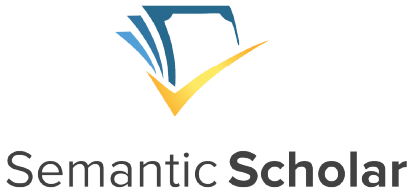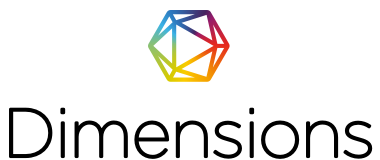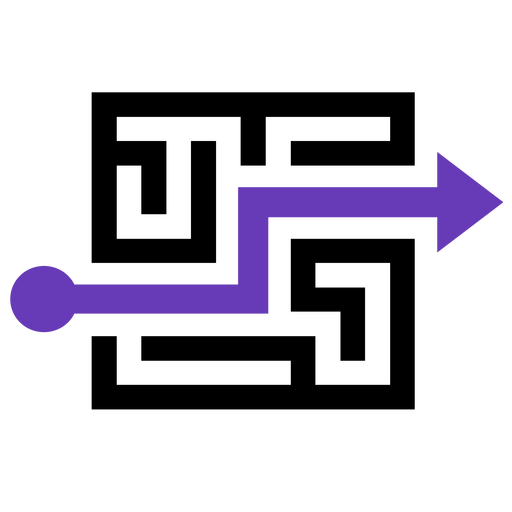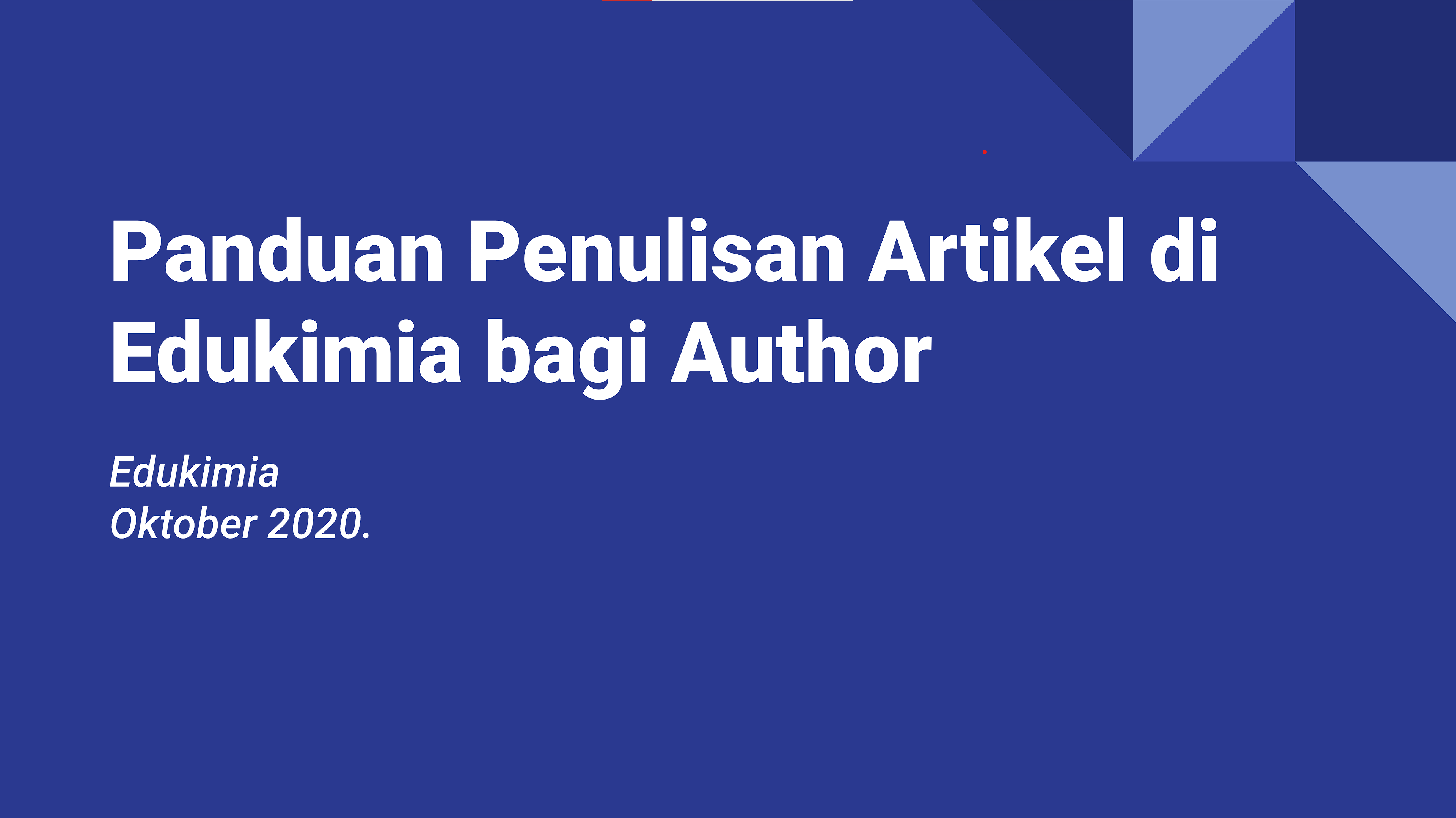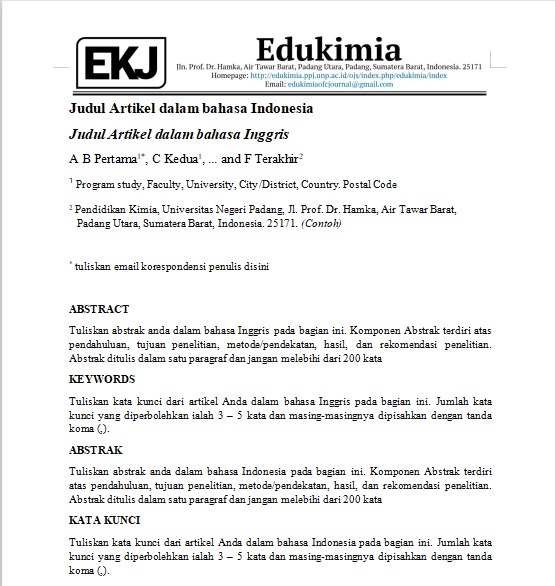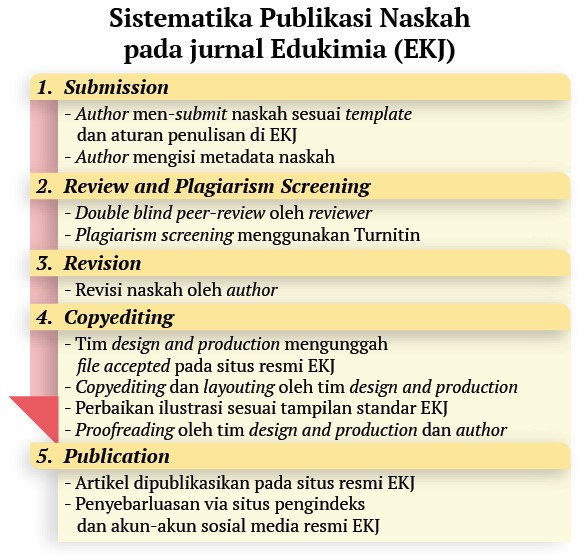Students’ Learning Readiness at Chemistry Classroom with Prototype Curriculum
Article Metrics
The abstract has been viewed for 312 times.The full pdf article has been downloaded for 234 times.
Abstract
Keywords
Full Text:
PR_05_405 (Bahasa Indonesia)References
Rosmana PS, Iskandar S, Fatimah FS, Aprillionita R, Arfaiza SA, Hamidah W. Penerapan Kurikulum Prototype pada Masa Pandemi Covid-19. FUNDATIA. 2022;6(1):62–75.
Rosmana PS, Iskandar S, Fauziah H, Azzifah N, Khamelia W. Kebebasan dalam Kurikulum Prototype. AS-SABIQUN. 2022;4(1):115–131.
Sadewa MA. Meninjau Kurikulum Prototipe Melalui Pendekatan Integrasi-Interkoneksi Prof M Amin Abdullah. Jurnal Pendidikan Dan Konseling. 2022;4(1):266–280.
Kemendikbudristek. Dorong Pemulihan Pembelajaran di Masa Pandemi [Internet]. 2021 [cited 2022 August 02]. Available from: https://www.kemdikbud.go.id/main/blog/2021/12/dorong-pemulihan-pembelajaran-di-masa-pandemi-kurikulum-nasional-siapkan-tiga-opsi
Kemendikbudristek. Kurikulum Prototipe Utamakan Pembelajaran Berbasis Proyek [Internet]. 2022 [cited 2022 September 12]. Available from: https://ditpsd.kemdikbud.go.id/public/artikel/detail/kurikulum-prototipe-utamakan-pembelajaran-berbasis-proyek
Mulyani DF, Arif S. Implementation of Project Based Learning (Pjbl) Based on Science, Technology, Engineering and Mathematics (Stem) To Improve Metacognitive Thinking Ability. INSECTA: Integrative Science Education and Teaching Activity Journal. 2021;2(1):117-129.
Farwati R, Metafisika K, Isnaini M, Putra EE, Solikha DF, Sitinjak DS, Sari I, et al. STEM Education Dukung Merdeka Belajar (Dilengkapi dengan Contoh Perangkat Pembelajaran Berbasis STEM). Bengkalis: DOTPLUS Publisher. 2021.
Sukmawijaya Y, Suhendar S, Juhanda A. Pengaruh Model Pembelajaran STEM-PJBL terhadap Kemampuan Berpikir Kreatif Siswa Pada Materi Pencemaran Lingkungan. Jurnal BIOEDUIN. 2019;9(2):28–43.
Aninda A, Permanasari A, Ardianto D. Implementasi Pembelajaran Berbasis Proyek pada Materi Pencemaran Lingkungan untuk Meningkatkan Literasi STEM Siswa SMA. Journal of science education and practice. 2020;3(2):1-16.
Faiz A, Parhan M, Ananda R. Paradigma Baru dalam Kurikulum Prototipe. EDUKATIF : JURNAL ILMU PENDIDIKAN. 2022;4(1):1544–1550.
Suryadien D, Dini R, Dewi AA. Rencana Implementasi Kurikulum Prototipe Pada Masa Pandemi Covid-19 di Indonesia. Jurnal PGMI UNIGA. 2022;1(01):27-34.
Slameto. Belajar dan Faktor-faktor yang Mempengaruhinya. Jakarta: Rineka Cipta. 2013.
Ferdian A, Maryam S, Selamat IN. Analisis Kesiapan Belajar Siswa Kelas X MIPA dalam Pembelajaran Kimia. Jurnal Pendidikan Kimia Undiksha, 2018;2(1):8–14.
Darso, D. Kesiapan Belajar Siswa dan Interaksi Belajar Mengajar Terhadap Prestasi Belajar. INVOTEC. 2011;7(2):139-151.
Ma’shumah F, Muhsin M. Pengaruh Motivasi Belajar, Disiplin Belajar, Cara Belajar dan Interaksi Teman Sebaya terhadap Kesiapan Belajar. Economic Education Analysis Journal. 2019;8(1):318–332.
Mulyani, D. Hubungan Kesiapan Belajar Siswa dengan Prestasi Belajar. Konselor, 2013;2(1):27-31.
Sirait ED. Pengaruh Gaya dan Kesiapan Belajar terhadap Pemahaman Konsep Matematika Siswa. Formatif: Jurnal Ilmiah Pendidikan MIPA. 2018;7(3):207-218.
Sari RK. Analisis Kesiapan Belajar Siswa pada Materi Reaksi Reduksi dan Oksidasi Kelas X MAN 2 Filial Pontianak. Jurnal Ilmiah Ar-Razi. 2018;6(2):61-68.
Tanjung SS, Jaya P. Kontribusi Kompetensi Siswa dan Pemanfaatan Fasilitas Belajar di Sekolah terhadap Kesiapan Belajar Siswa. Voteteknika. 2019;7(2):92–98.
Wijaya IKWB, Windayani NWK. Pemberian Tugas Pra-Pembelajaran untuk Meningkatkan Kesiapan Belajar Siswa. Jurnal Pendidikan Kimia Indonesia. 2020;4(1):1–11.
Jayadiningrat MG, Tika IN, Yuliani, NP. Meningkatkan Kesiapan dan Hasil Belajar Siswa pada Pembelajaran Kimia dengan Pemberian Kuis di Awal Pembelajaran. Jurnal Pendidikan Kimia Indonesia. 2017;1(1):7–12.
Rozady MPN, Ken YP. Scratch Sebagai Problem Solving Computational Thinking dalam Kurikulum Prototipe. Inovasi dan Kreasi Dalam Teknologi Informasi. 2022;8(1):11-17.
Farwati R, Permanasari A, Firman H, Suhery T. Integrasi Problem Based Learning dalam STEM Education Berorientasi pada Aktualisasi Literasi Lingkungan dan Kreativitas. In: Prosiding Seminar Nasional Pendidikan IPA. 2017. p. 198-206.
Anggraini FI, Huzaifah S. Implementasi STEM dalam pembelajaran IPA di sekolah menengah pertama. In: Seminar Nasional Pendidikan IPA. 2021. p. 722-731.
Farwati R, Metafisika K, Sari I, Sitinjak D, Solikha DF, Putra EE. STEM Education Dukung Merdeka Belajar (Dilengkapi dengan Perangkat Pembelajaran Berbasis STEM). CV. DOTPLUS Publisher. 2021.
Audihani AL, Hidayah FF, Ristanti DA. Analisis Kesiapan Belajar Peserta Didik dalam Proses Pembelajaran Kimia Materi Hidrokarbon. 2019;(September).
Hartono D. Korelasi antara Kesiapan Belajar dengan Hasil Belajar Siswa di SMA Negeri 5 Lahat . Jurnal Samudra Geografi. 2011;4(1):39–44.
Ningsih NLPYW, Suniasih NW. Kesiapan Belajar dan Aktualisasi Diri Meningkatkan Hasil Belajar IPA. Mimbar Ilmu. 2020;25(3):367–379.
Wardani EP, Mardiyana M, Subanti, S. Analisis Miskonsepsi Siswa pada Materi Pokok Lingkaran Ditinjau dari Kesiapan Belajar dan Gaya Berpikir Siswa Kelas XI IPA SMA N 3 Surakarta Tahun Ajaran 2013/2014. Jurnal Pembelajaran Matematika. 2016;4(3):328-340.
Rizki UY. Hubungan Kesiapan Belajar dengan Optimisme Mengerjakan Ujian. Educational Psychology Journal. 2013;2(1):49-56.
Refbacks
- There are currently no refbacks.

.jpg)


